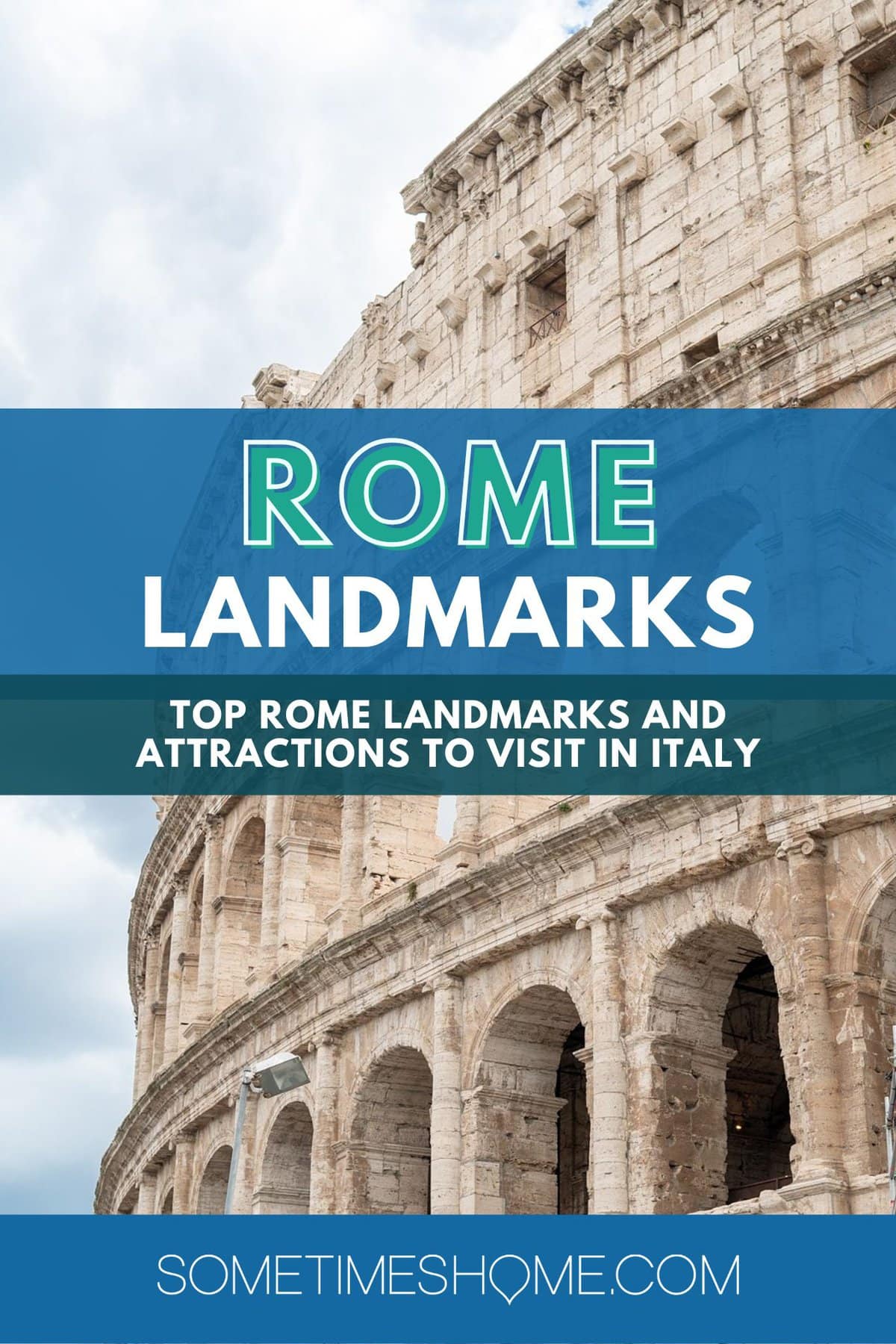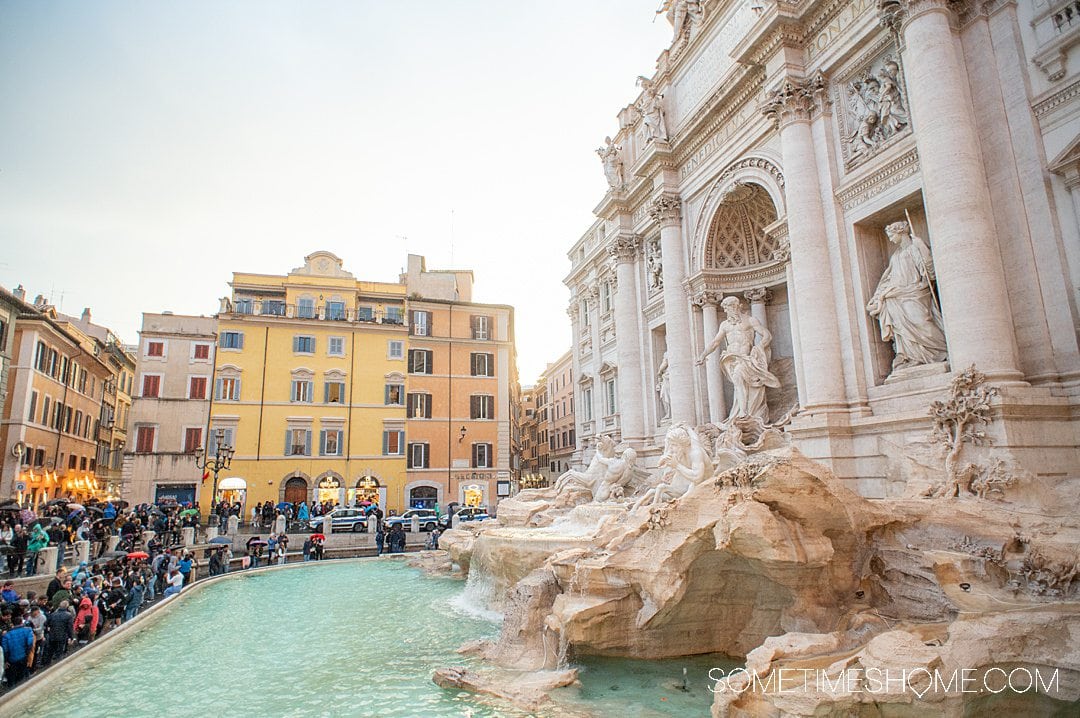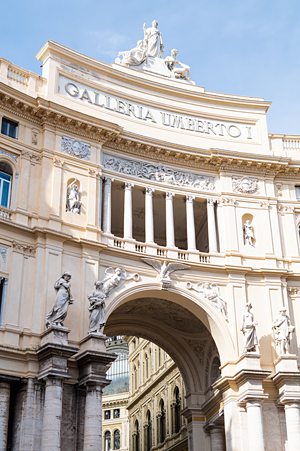Top Rome Landmarks and Attractions to Visit in Italy (2024)
It’s hard to have wanderlust and not dream of visiting Rome one day. The capital of Italy is a great place to visit, with an easily accessible major airport, plenty of historical landmarks, archeological sites, and great food to top it all off.
This is your complete guide to Rome’s most famous landmarks so you can ensure you see and do all you wish when visiting one of Europe’s most popular countries.
We’re sharing interesting facts, the most popular tourist attractions, and some lesser visited ones too, along with day trips from the area so no stone goes unturned during your Roman holiday.
Disclosure: We may make a small commission from affiliate links in this post, but all opinions are ours. We bring you content with genuine facts, photos, thoughts, and recommendations. Always. As Amazon Associates, we earn from qualifying purchases. This helps keep our content free and accessible to our readers.
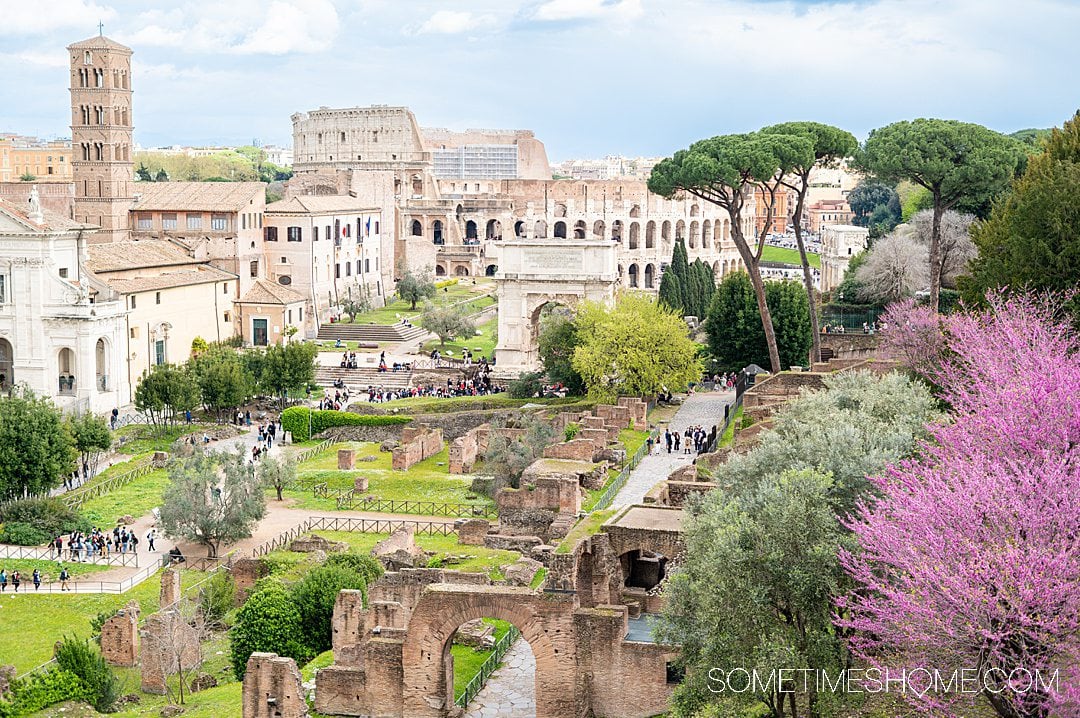
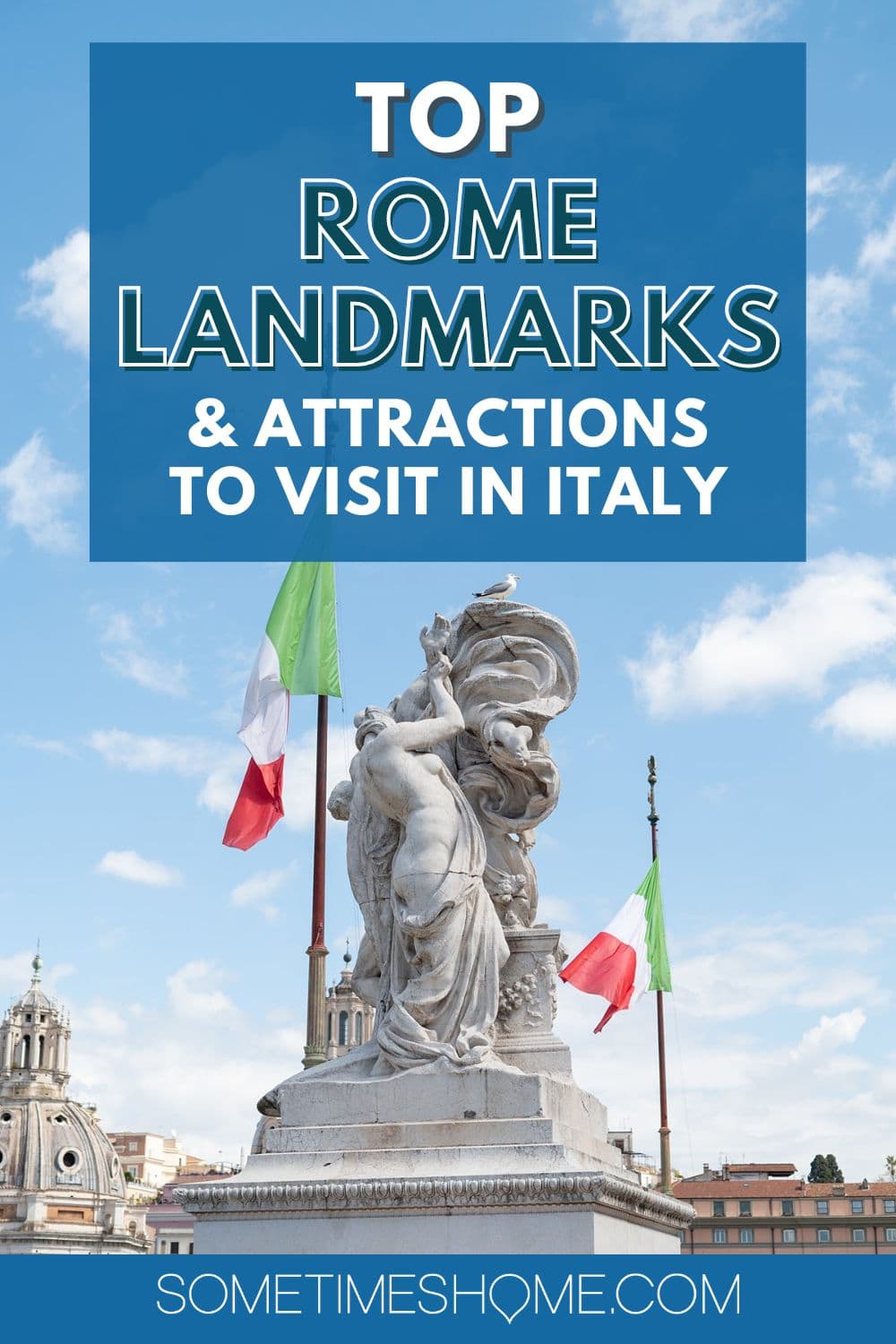
Most Famous Rome Landmarks
These Rome landmarks are absolute must-sees during your visit to Italy.
The Colosseum (Flavian Amphitheatre)
A UNESCO World Heritage Site, the Colosseum is considered one of the greatest architectural and engineering achievements of the Roman Empire. It hosted contests involving armed combat between gladiators, who were usually slaves or prisoners, and sometimes even showcased exotic animals.
Open to the public, you can take it all in with your own entrance tickets or enjoy a guided tour, some of which give you access to the underground chambers of the Colosseum. Others offer special nighttime visits.
The illuminated monument takes on a different feeling after dark, creating a magical atmosphere. Additionally, some tours enable access to the third tier of the Colosseum, which offers panoramic views of the amphitheater and the surrounding area.
Roman Forum
The Roman Forum earned notoriety because Cicero delivered speeches and historical choices were made there.
The Arch of Septimius Severus and the Curia Julia (ancient Roman Senate House) are just a few of the architectural marvels that have been uncovered during excavations at the vast archaeological site known as the Roman Forum.
One of the most notable buildings in the Roman Forum is the Temple of Saturn, the remnants of which – once eight enormous columns and a platform – may still be seen today. Another well-preserved building that features military themes and emblems of authority is the Arch of Septimius Severus.
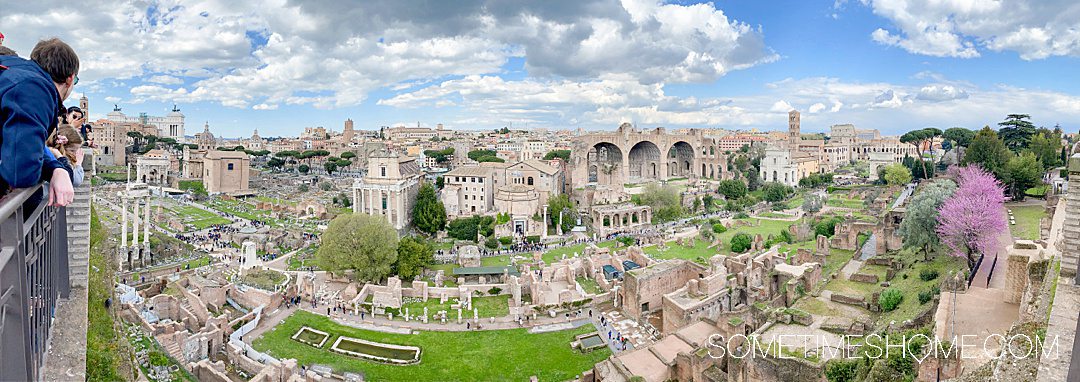
Palatine Hill
Palatine Hill is one of the Seven Hills of Rome. It’s in the historic city center near the Colosseum and is considered the most ancient part of the city. It is closely associated with the legendary founding of Rome and is believed to be the location where Romulus, the city's founder, established his first settlement.
Remnants of Domus Augustana – a huge network of connected structures, grounds, and courtyards – can be seen today. It was the official Roman emperors’ palace from the time of Augustus until the fall of the Western Roman Empire and one of the most important buildings on Palatine Hill.
The Pantheon
The Pantheon is renowned for its exceptional architectural design and engineering. It was completely rebuilt during the reign of Emperor Hadrian.
Originally built as a Roman temple, the Pantheon was dedicated to worshipping all gods. The most notable feature of the Pantheon is its massive domed roof, which was the largest unreinforced concrete dome in the world for over 1,800 years. Even today, it remains an impressive architectural feat, with an open hole in the middle letting the elements indoors, from sunshine to rain.
Consider visiting the Pantheon area in the evening when the surrounding Piazza della Rotonda comes alive with street performers, musicians, and its outdoor cafes. Also, did you know you can attend Mass at The Pantheon? It is held every Saturday at 5:00 pm and every Sunday at 10:30 am.
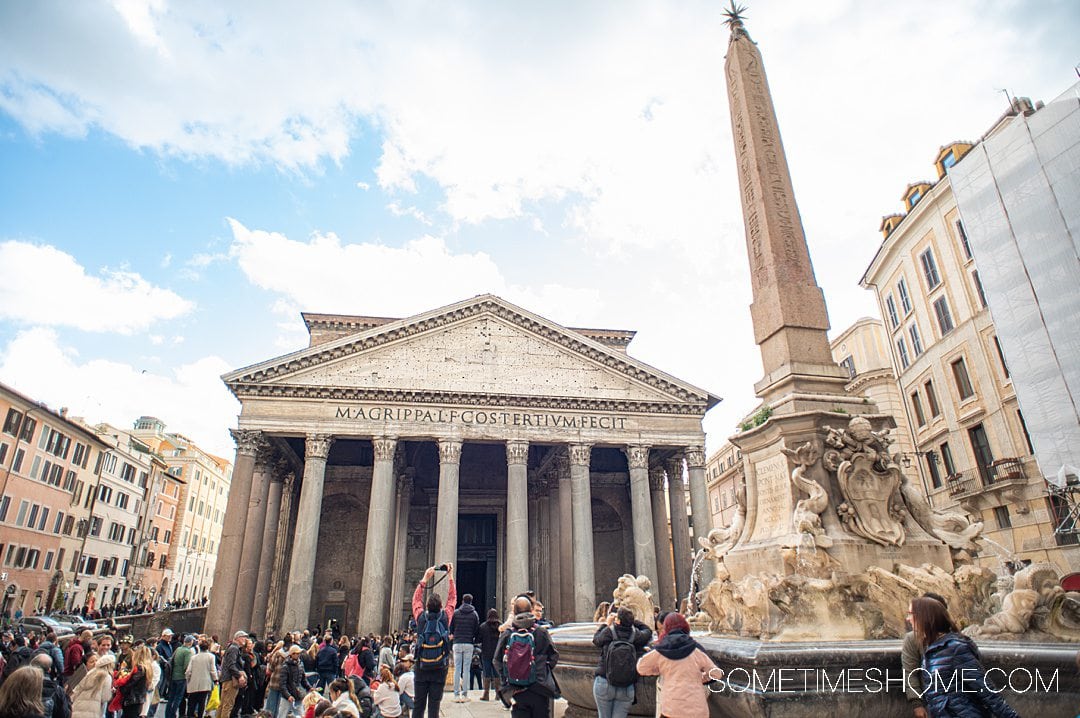
Monument of Vittorio Emanuele II
The monument is dedicated to Vittorio Emanuele II, the first king of unified Italy, and houses the Risorgimento Museum. Also located here is the Tomb of the Unknown Soldier, which is dedicated to the unidentified soldiers who lost their lives in World War I.
The tomb serves as a symbol of honor and remembrance for all fallen soldiers and is guarded by the military. An Eternal Flame continuously burns as a tribute to their sacrifice.
The monument is free to visit, but for a fee, you can take the elevator or climb the stairs to the very top of the monument. There, you can enjoy breathtaking city views, including seeing nearby famous landmarks like the Colosseum, Roman Forum, and Piazza Venezia.
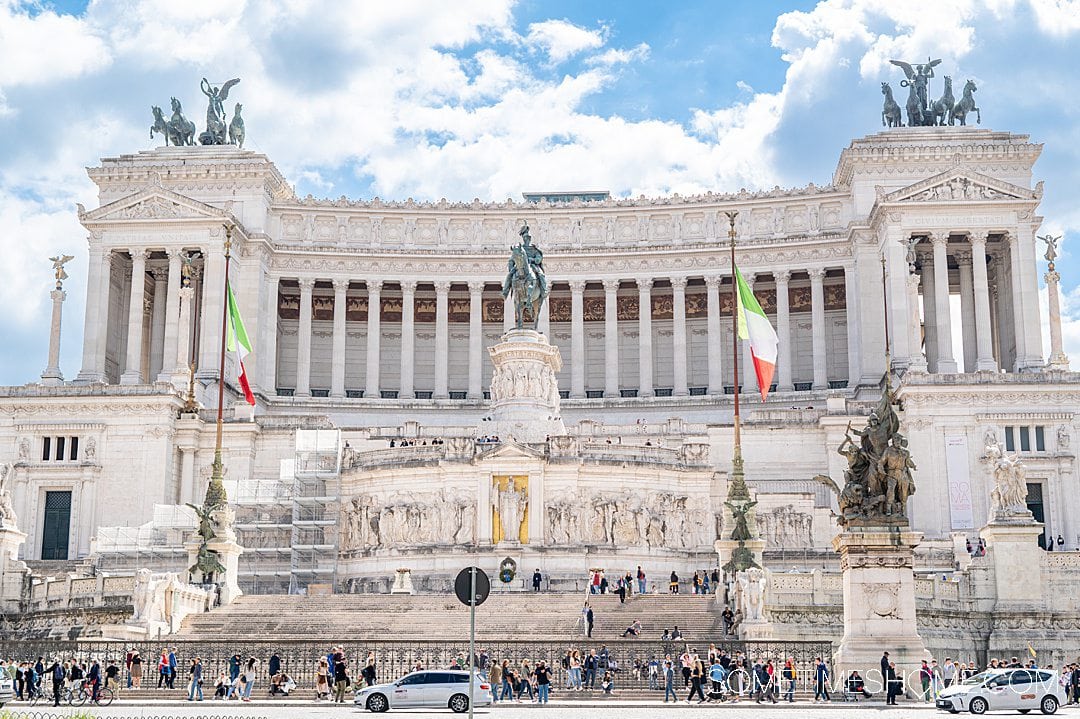
Trevi Fountain (Fontana di Trevi)
You’ve undoubtedly seen The Trevi Fountain in movies, but nothing compares to seeing the most famous fountain in Italy in person.
The fountain is a masterpiece designed by Italian architect Nicola Salvi, completed in 1762. The grand-scale fountain features intricate sculptures and dramatic water effects. It leaves a lasting impression.
The Trevi Fountain is wrapped in legend – many people believe that tossing a coin into the fountain over your left shoulder will ensure your return to Rome. It is estimated that millions of euros worth of coins are thrown into the fountain each year. The proceeds are used for charitable purposes.
The fountain is such a famous landmark in Rome that it’s crowded nearly all hours of the day. Go in the very early morning, just before or after sunrise, for your chance at having the fountain to yourself.
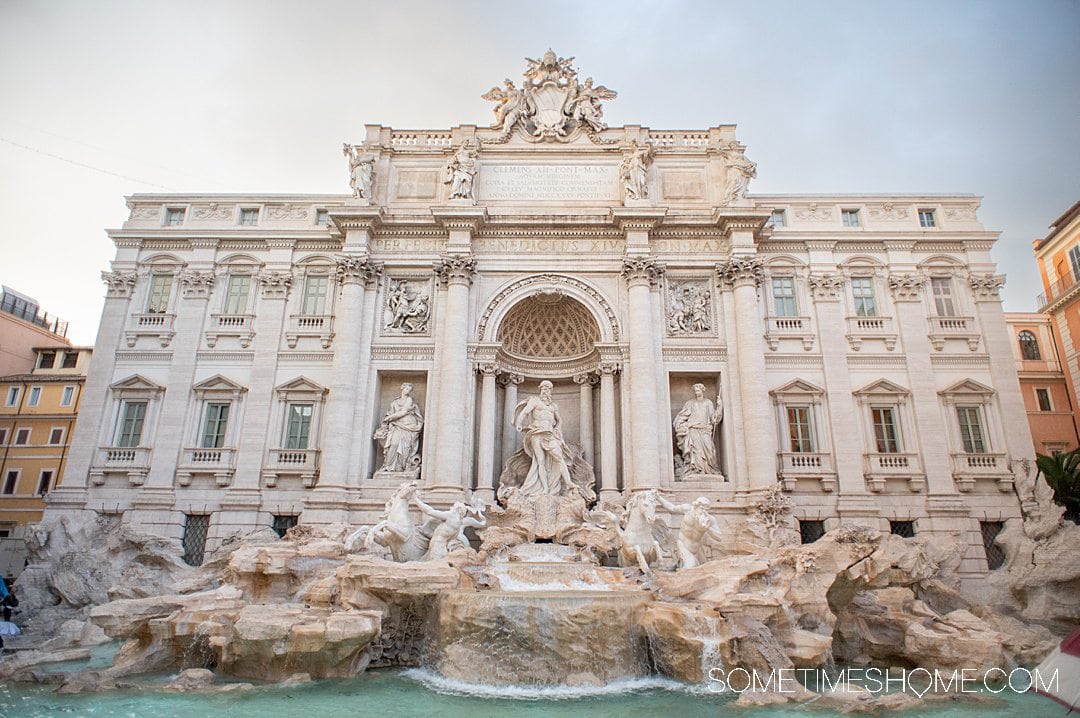
Spanish Steps at Piazza di Spagna
One of the most stunning sets of stairs in the world, the Spanish Steps, are a magnificent example of Baroque architecture.
The stairs, constructed in 1725 and designed by Italian architect Francesco de Sanctis, rise 135 steps from Piazza di Spagna to the Trinità dei Monti church. The renowned Barcaccia Fountain, with a nautical theme, is at the foot of the stairs.
The Spanish Steps are decorated with floral displays seasonally and for special events, adding to their beauty.
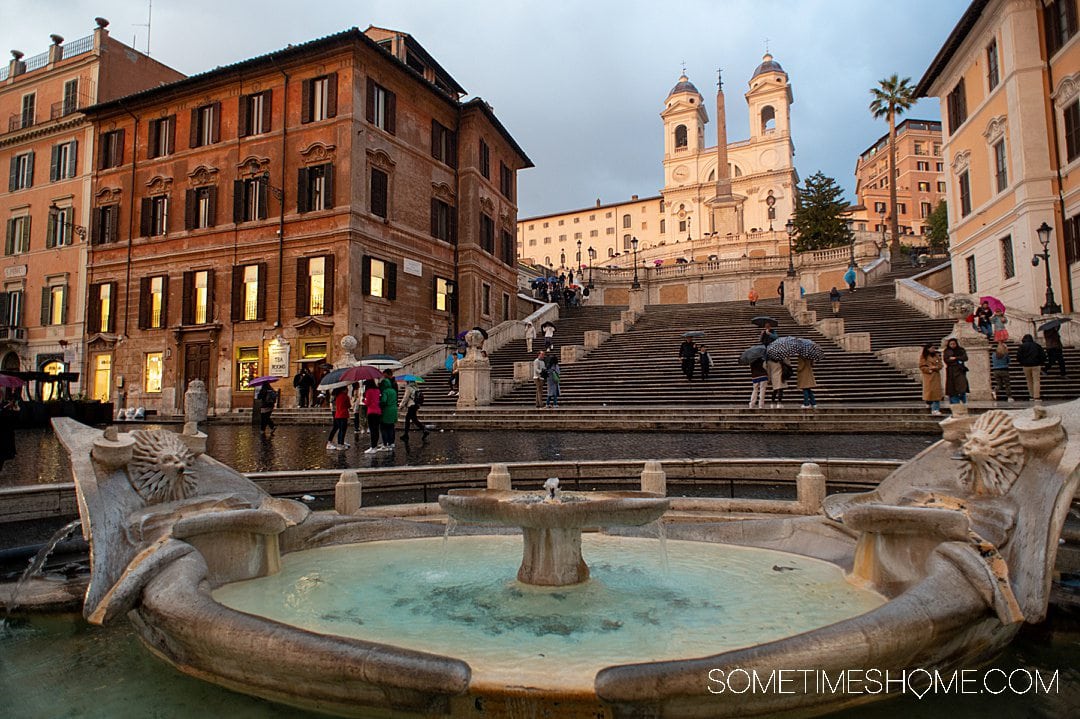
Vatican City
Though Vatican City is technically its own country – and the smallest in the world, at that – residents of Vatican City actually have Italian passports. So, because its closest major city is Rome, many people combine time sightseeing in Rome with Vatican City’s landmarks.
There is plenty to do and see in Vatican City. We recommend setting aside a dedicated day to see the impressive sights here. For the best experience without crowds, book a guided tour.
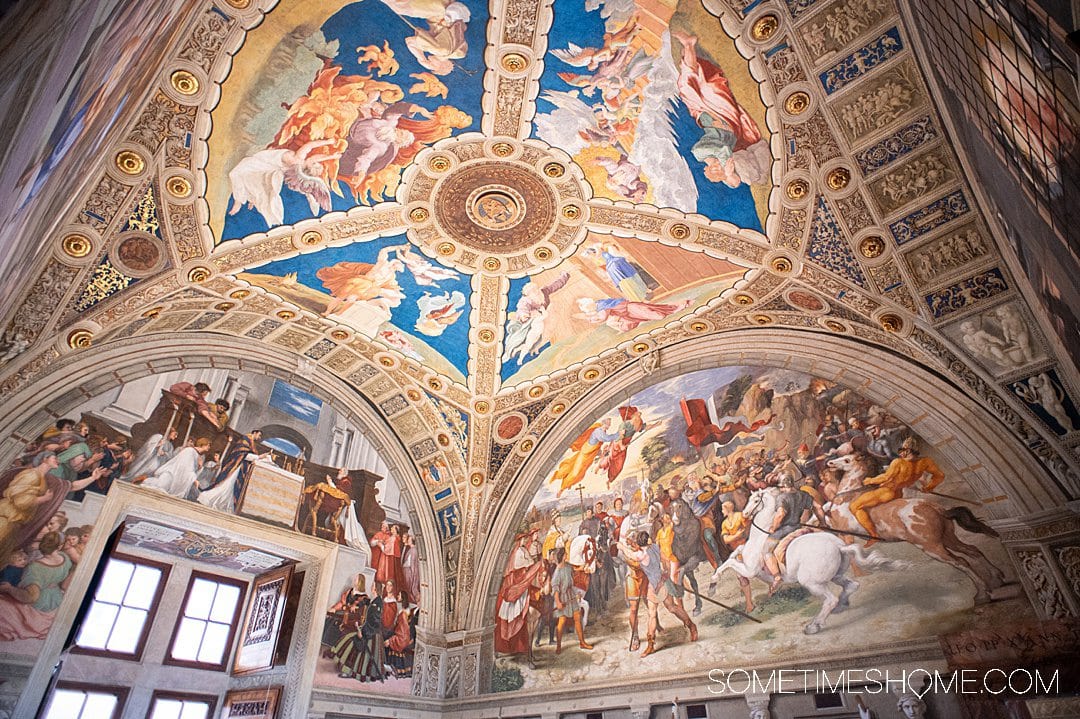
St. Peter’s Basilica
As the largest Catholic church in the world, St. Peter’s Basilica holds great religious and symbolic importance for Catholics worldwide. It is built over the burial site of Saint Peter, one of the twelve apostles of Jesus Christ and the first Pope of the Catholic Church.
Designed by notable architects, including Donato Bramante, Michelangelo, Carlo Maderno, and Gian Lorenzo Bernini, the basilica showcases a blend of Renaissance and Baroque architectural styles.
It’s also home to Michelangelo's breathtaking sculpture, the Pietà. This masterpiece depicts the Virgin Mary cradling the body of Jesus after the crucifixion.
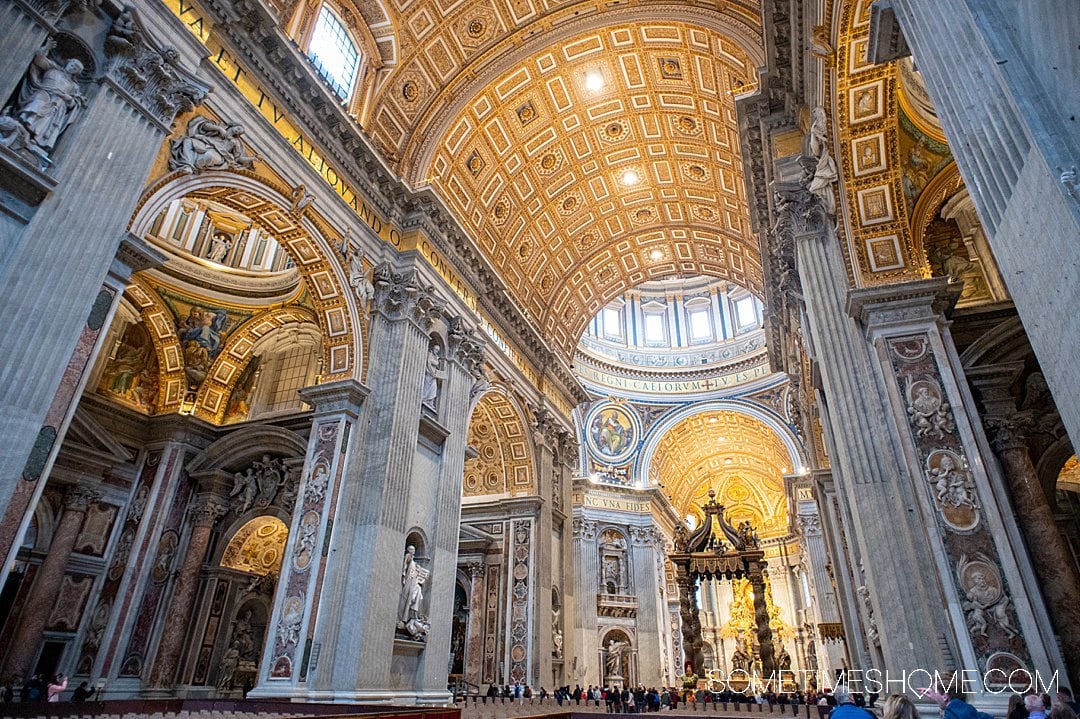
Sistine Chapel and The Vatican Museums
The Sistine Chapel is renowned for its ceiling, which was painted by the Italian artist Michelangelo between 1508 and 1512. The ceiling frescoes depict scenes from the Book of Genesis, including the iconic “Creation of Adam” with God’s outstretched finger reaching out to Adam.
But The Vatican Museums are so much more than the Sistine Chapel! We couldn’t believe how much artwork is there. Notable works include Raphael's “School of Athens,” Caravaggio's “The Entombment of Christ,” and ancient sculptures such as the “Laocoön and His Sons.”
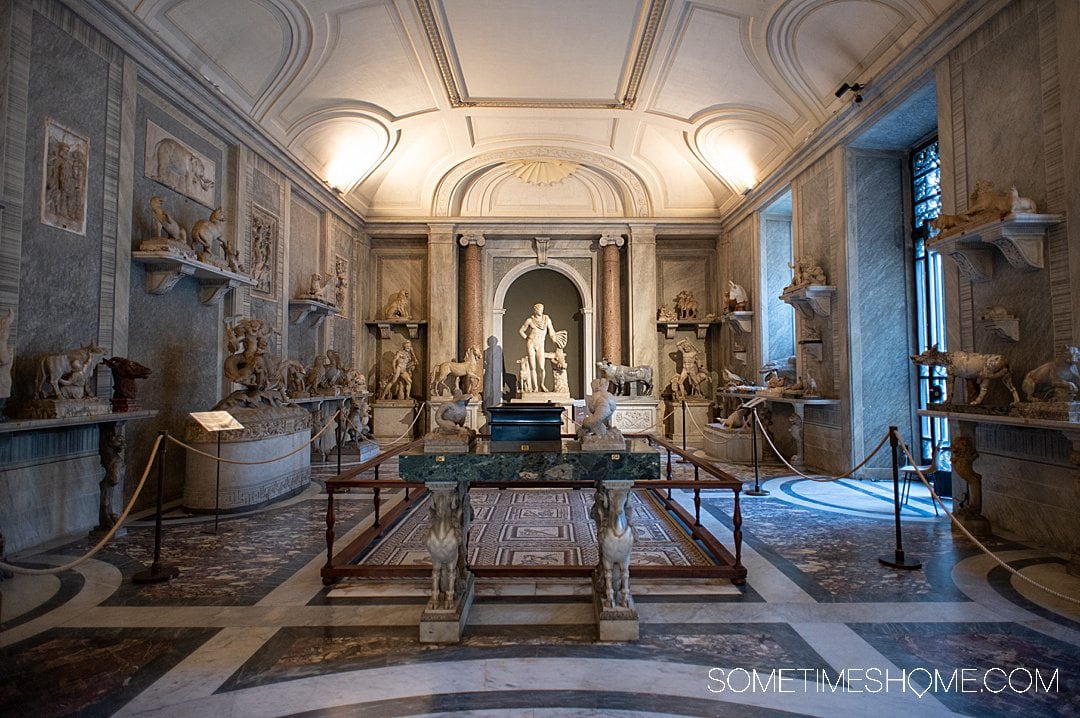
Don’t miss The Raphael Rooms, a series of interconnected chambers adorned with frescoes by the renowned Italian painter Raphael. You can also see the impressive collections of ancient Egyptian and Etruscan art.
At the end of your visit to the museum, you descend the incredible Bramante Staircase, which is a grand spiral staircase built in the early 1500s.
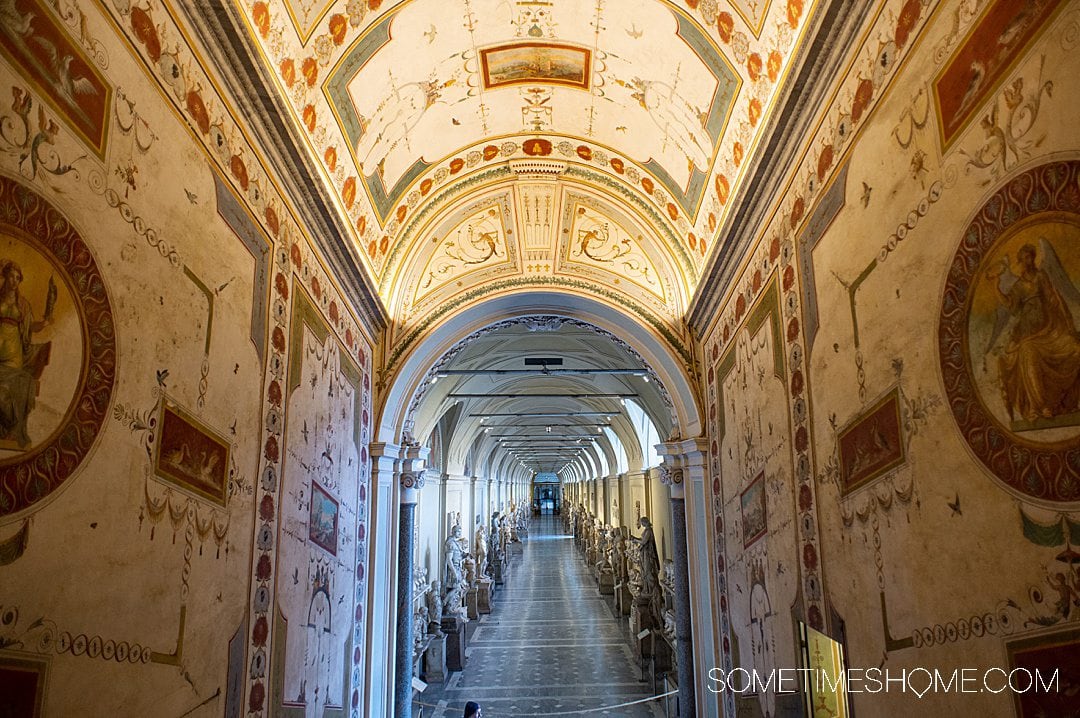
Book a Tour to Beat the Crowds and Not Miss Important Works of Art
The #1 piece of advice we have for visiting The Sistine Chapel and The Vatican Museums is to book an early morning tour. For example, we did the Pristine Sistine tour with Walks, and it was incredible to enter the museum among the first let in that day and have the rest of the day to explore Vatican City solo afterward. The perfect combination of events!
Additionally, the guide provides priceless information about all the art and Vatican City, including handing all the tour participants a color copy of the Sistine Chapel ceiling and explaining each panel and section. This is important because no one is allowed to talk in the chapel!
🚨 Tour space is limited and sells out WEEKS in advance. BOOK NOW.Vatican Gardens
The gardens were initially established as a fruit orchard and vineyard during the Renaissance, and over time, they evolved into a peaceful retreat within Vatican City. The gardens offer visitors a chance to connect with their spirituality by providing a space for reflection, meditation, and prayer.
Encompassing a vast area just shy of 57 acres (23 hectares), featuring a variety of plants from different regions of Italy and around the world, the gardens also contain hidden treasures and historical landmarks that are not accessible to the general public. These include ancient Roman remains, Renaissance-era structures, and papal retreats.
Since 2022, the Vatican Gardens are not open to the general public. With access limited to guided tours, you must purchase a ticket that includes a tour of the Sistine Chapel to access them.
Map of Famous Landmarks in Rome and Vatican City
Rome Landmarks to See If You Have Time (Or Have Been to Rome Before)
The landmarks mentioned above are must-sees and the most famous in the city. But Rome has plenty more monuments, parks, and architectural sites to enjoy if you have more time in the Eternal City, as it’s nicknamed.
Castel Sant'Angelo (Mausoleum of Hadrian)
Castel Sant'Angelo was originally built as a mausoleum for the Roman Emperor Hadrian in the 2nd century AD. Over the centuries, Castel Sant'Angelo transformed from a mausoleum into a papal fortress and residence.
In the Middle Ages, the fortress played a crucial role in protecting the Vatican and served as a refuge during times of conflict.
Today, Castel Sant'Angelo houses a museum, and visitors can explore the various rooms and corridors of the fortress, which feature exhibitions on ancient Roman history, medieval weaponry, Renaissance art, and the building's architectural evolution. From its terraces, visitors can enjoy a stunning view of the city and the River Tiber, including a direct line of sight to the dome of the Pantheon.
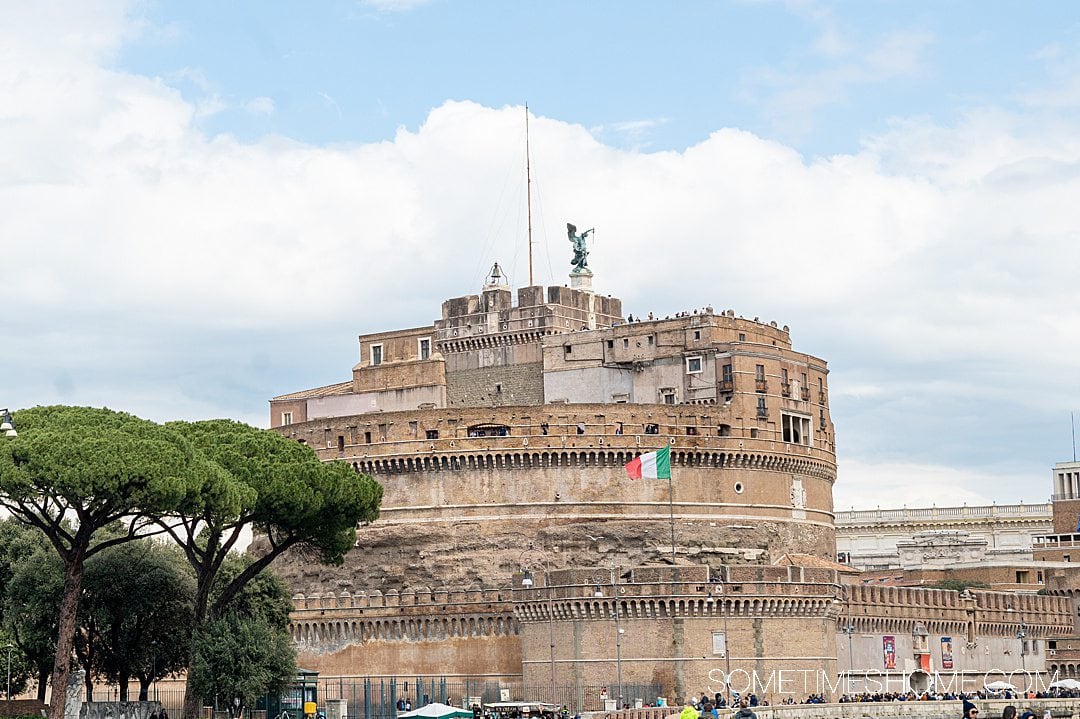
Galleria and Villa Borghese
Villa Borghese is a vast public park located in the heart of Rome. It covers approximately 148 acres. The park features lush gardens, walking paths, fountains, the Borghese Gallery and Museum, the Borghese Theater, and the Pincio Terrace.
Galleria Borghese is an art gallery located within the museum complex. It houses the private art collection of the Borghese family. Since the 13th century, they were one of the most prominent and influential Italian noble families…and for many centuries following.
The gallery is renowned for its extensive collection, including the famous reclining statue of Paolina Borghese.
Piazza Navona
This square is built on the ancient Stadium of Domitian and features three impressive fountains. The centerpiece is the Fontana dei Quattro Fiumi (Fountain of the Four Rivers), representing four major rivers from different continents. It is considered one of Bernini's masterpieces.
One of the best times to visit the Piazza is during December when the square is adorned with festive decorations and hosts a traditional Christmas market.
The Piazza Navona was the starting place for our sunset tour of Rome, where we learned about the importance of the UNESCO World Heritage Site underneath, Domitian Stadium, visited the Spanish Steps, Trevi Fountain, had gelato and learned about ancient Romans.
Basilica di San Pietro in Vincoli
The tomb of Pope Julius II is at Basilica di San Pietro in Vincoli. Its centerpiece is the most famous attraction: Michelangelo's magnificent Moses statue, from 1515.
Secondly – yet the reason why the church has its name – is the famous Chains of St. Peter, on display inside since the 5th century.
This basilica is wrapped in legend, named after these two pair of chains from the apostle that miraculously fused together: the chains of Peter’s first imprisonment in the Mamertine Prison in Rome and the chains from Jerusalem when he was jailed for preaching about Jesus.
Basilica di Santa Maria Maggiore
According to legend, the Virgin Mary appeared in a dream to Pope Liberius and a wealthy Roman nobleman named John. She instructed them to build a church on the spot where they would find snow miraculously falling on a hot August day.
Basilica di Santa Maria Maggiore holds great significance in Catholicism and is a pilgrimage site for believers. It’s considered the oldest church in Rome dedicated to the Virgin Mary.
The “Miracle of Snow” is commemorated annually on August 5 with a shower of white rose petals inside the basilica.
Trastevere Neighborhood
Trastevere is beloved for its old-world charm and genuine Roman character. The neighborhood offers a glimpse into the authentic everyday life of Romans with narrow cobblestone streets, colorful buildings (some covered with ivy and flowers), and sometimes laundry hanging from windows.
This area also features the ancient church of San Crisogono, the picturesque Piazza di Santa Maria, and the Basilica of Santa Maria.
It has a storied history, which we learned about during our neighborhood evening food tour with Devour. Trastevere is on the opposite side of the Tiber River, and it was where Jews were exiled in the 16th century under Pope Paul IV. Today, the neighborhood has a thriving restaurant scene where the locals go.
Palazzo and Galleria Doria Pamphilj
If you’re looking for hidden gems in Rome landmarks, you’ve found them! The palace and gallery are slightly off the beaten path, making them less crowded attractions. The distinguished Doria Pamphilj family has called the majestic Palazzo Doria Pamphilj home since the 16th century.
The Galleria Doria Pamphilj is an art gallery housed within Palazzo Doria Pamphilj. The gallery features work by Caravaggio, Raphael, Titian, Velázquez, and Bernini, among others. Two particular masterpieces not to be missed are Caravaggio's “Rest on the Flight into Egypt” and Velázquez's “Portrait of Innocent X.”
Palazzo Colonna
This palace has been owned by the Colonna family for over 20 generations. The palace is a testament to the power and influence of the Colonna family, who played a significant role in the history of Rome and Italy.
The Galleria Colonna, located within the palace, showcases masterpieces by artists such as Tintoretto, Veronese, Carracci, and Guido Reni. The gallery's rooms are decorated with exquisite frescoes, intricate stucco work, and luxurious furnishings. The Sala Grande (Great Hall) and the Hall of the Princess are two highlights within the palazzo.
Outside, the gardens provide a peaceful oasis with lush greenery, fountains, and charming walkways. But be sure to check out the rooftop terrace, where you can enjoy breathtaking panoramic views of the Altare della Patria and the Roman Forum.
Baths of Caracalla
The baths were massive in scale when built during Emperor Caracalla's reign. They covered an area of approximately 28 acres.
The complex included numerous rooms, gardens, pools, and even a stadium; the sheer scale and complexity of the infrastructure were impressive achievements for the time. Today, the baths are ruins, but you can explore and walk through the vast halls as you imagine the bustling activity that once took place there.
Capuchin Crypt
This unique and famous site is known for its macabre yet fascinating display of human bones.
The crypt was created to be the final resting place for deceased Capuchin friars. The bones are intricately displayed, creating a unique and eerie aesthetic.
However, it was created with a purpose. The crypt is designed to convey the transience of life and the inevitability of death, serving as a reminder of mortality. It encourages visitors to contemplate the fleeting nature of existence and reflect on the spiritual and philosophical aspects of life and death.
Janiculum Hill (Colle del Gianicolo)
Janiculum Hill is the spot for breathtaking panoramic views of Rome, especially during sunrise or sunset. From its elevated position, you can admire St. Peter's Basilica, the dome of the Pantheon, the Tiber River, and the rooftops of the historic city center.
At the top of the hill, you’ll also find the Fontana dell'Acqua Paola (also known as the Fontanone) built in the 17th century.
Circus Maximus
Although this is one of the Roman landmarks that is primarily in ruins today, Circus Maximus remains to offer insights into impressive architecture during Roman times. Initially used for chariot races and other public spectacles, it became a venue for religious ceremonies, processions, and even gladiatorial contests.
The Circus Maximus, with a seating capacity of hundreds of thousands of people, was the largest stadium in ancient Rome.
Piazza del Popolo
This square serves as a gateway, linking Vatican City to important attractions such as the Villa Borghese Park, the Spanish Steps, and the shopping district along Via del Corso.
At the center of the square stands the Obelisco Flaminio, an ancient Egyptian obelisk dating back to the 13th century BCE. On either side of the obelisk are two twin churches, Santa Maria dei Miracoli and Santa Maria in Montesanto, both known for their elegant Baroque facades.
Fireworks displays, cultural festivals, and music performances are often held in the square.
Tiber River Cruise
A Tiber River Cruise offers a unique perspective of Rome's iconic landmarks and scenic beauty.
Admire famous sights such as Castel Sant'Angelo, Tiber Island, and the numerous bridges that span the river as you cruise. Various options are available, ranging from short sightseeing tours to longer excursions. Some cruises offer dining experiences, combining a scenic tour with a meal onboard.
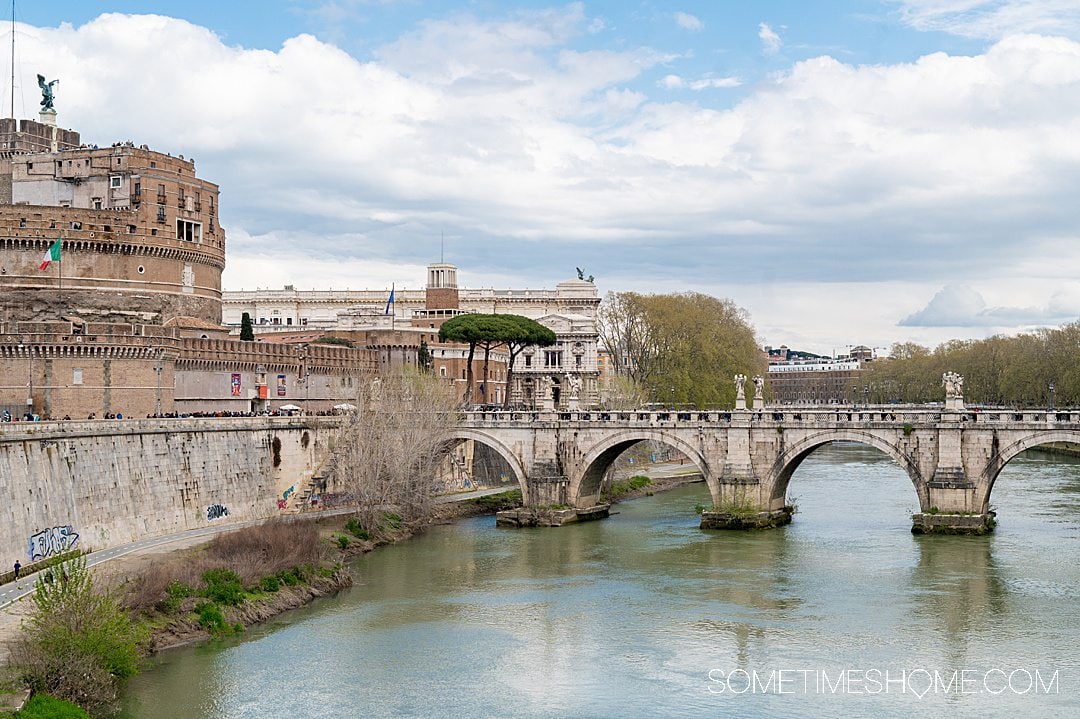
Palazzo Barberini Museum
The Palazzo Barberini Museum houses the National Gallery of Ancient Art, which is the most important national collection of older paintings in Rome.
It boasts works from renowned Italian and European artists showcasing diverse paintings, sculptures, and decorative arts, providing visitors with a comprehensive view of Western art history.
One of the most celebrated works in the museum is Raphael's “La Fornarina,” which depicts Raphael's lover, reputed to be the daughter of a Roman baker.
Food in Rome
The city’s food is certainly a cultural Rome landmark! What’s time spent in Rome without trying classics like Roman pasta, Italian cheese, or wine and Prosecco?
These three experiences are not to be missed:
- A food tour with Devour, which was the #1 food experience we had in Rome.
- Pizza, which is cut to your desire and weighed for cost instead of paying a set price per slice like in the United States.
- A sit-down meal to enjoy Cacio e Pepe or L’Amatriciana pasta – both are divine!
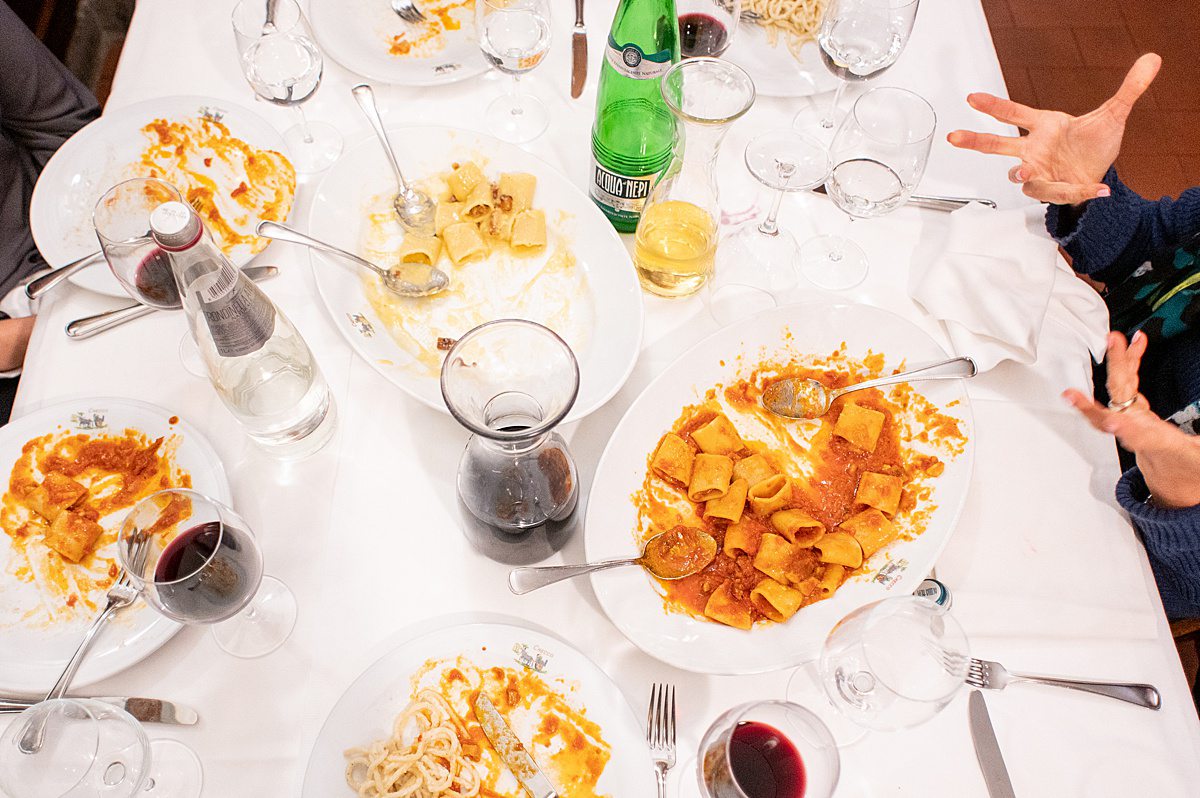
Day Trips from Rome
Naples
One of the oldest continuously inhabited cities in the world, Naples’ history dates back over 2,800 years. It was once a major cultural and political center of the Roman Empire and has a wealth of UNESCO World Heritage sites.
Explore ancient ruins, such as the underground tunnels of Napoli Sotterranea, eat authentic Neapolitan pizza, and adventure through the historic city center. The “Centro Storico,” as it's known, is a treasure trove of narrow streets, beautiful churches, and architectural wonders, including the Naples Cathedral, San Lorenzo Maggiore, and the Royal Palace of Naples.
We also recommend walking along the Mediterranean waterfront. It’s lovely if the weather is favorable, day or night!
The train to Naples from Rome is just over an hour. You can also book a day trip that includes transportation or take a Mediterranean Cruise that stops there (but that's much longer than a day trip).

TOP NAPLES TOURS
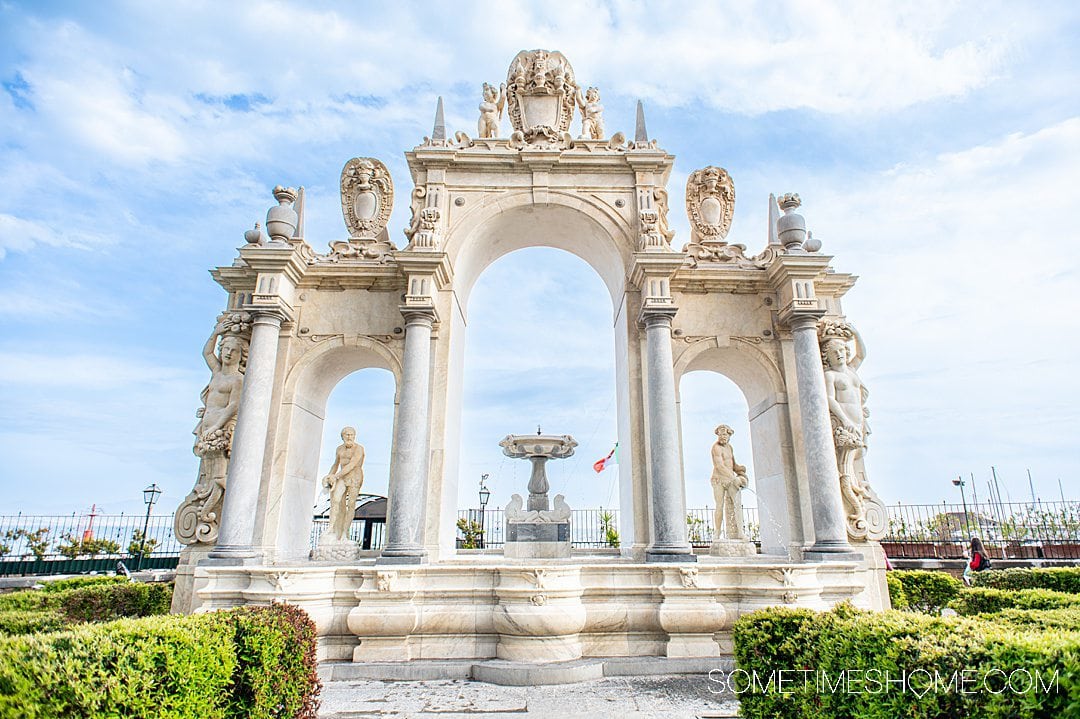
Castel Gandolfo
Castel Gandolfo is renowned for being the traditional summer residence of the Pope. The Papal Palace of Castel Gandolfo, located within the town, has been a retreat for Popes for centuries.
Explore the palace and its beautiful gardens; an audio-guided tour will provide enriching insight into the history and traditions of the Papal residence.
The town itself is in a gorgeous location that offers stunning panoramic views of Lake Albano and the surrounding countryside. It has a charming historic center with narrow streets, quaint shops, and traditional architecture.
Pompeii
Pompeii is an extraordinary archaeological site that provides a unique window into ancient Roman life. The city was remarkably well-preserved under volcanic ash, allowing archaeologists to uncover a wealth of artifacts, buildings, and even the remains of its inhabitants.
Visitors can explore the streets, houses, temples, and public buildings, getting a firsthand glimpse of daily life, frozen in time, in ancient Rome.
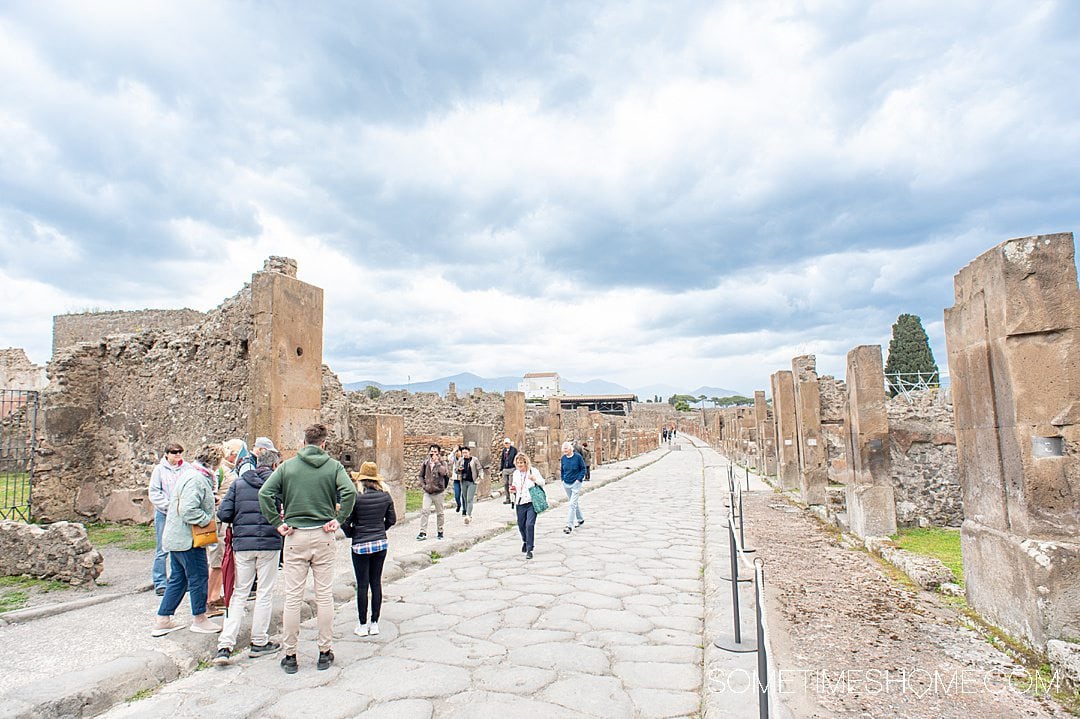
Highlights include the House of the Vettii, the Temple of Apollo, the Forum, and the Amphitheatre, which provide insights into the architectural prowess of the time.
You could spend days there and never see it all. Instead, we recommend a guided tour. That, combined with informative exhibits, provides valuable insights into the city's history, architecture, and archaeological excavation process.
You can get to Pompeii in just over two hours by train or sign up for a day trip.
Tivoli
One of the main attractions in Tivoli is Villa d'Este, a UNESCO World Heritage Site. This magnificent Renaissance villa is famous for its stunning gardens and intricate fountains.
Another significant historical site in Tivoli is Hadrian's Villa, a sprawling archaeological complex built as the extravagant retreat of Emperor Hadrian. This villa complex showcases the grandeur and opulence of ancient Roman architecture.
Tivoli is surrounded by natural beauty, including the scenic countryside and the picturesque landscape of the Aniene River Valley. Many come to enjoy hiking or cycling in the nearby hills.
- 19 Italian Dishes Worth Flying to Italy For
- Will Italy Tourism Restrictions Impact Your Vacation?
- Top 30 Things to Do in Florence Italy


